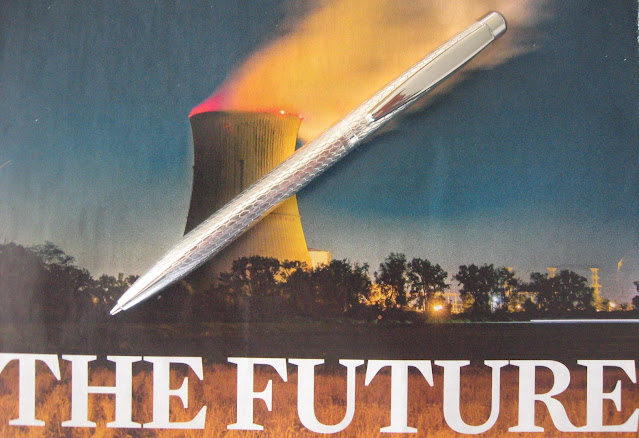A Comparative Review of Some Faber Castell Low Price Range General Writing Mechanical Pencils
Guest Post by Tom
About half a year ago, I discovered Dave’s mechanical pencils blog. As someone who just got into the hobby of collecting woodcase pencils, the blog opened up a whole new world of mechanical pencils to me. I enjoyed reading through the reviews, so I decided to get in touch and offered to contribute one.
In this review, I will talk primarily about the Faber Castell Grip 1345/1347, which, at the time of writing this, is still missing from the review list. However, I will also compare it to the GripMatic and the TK-Fine Exectutive (which have already been reviewed on the blog), since these are also general writing pencils in a similar price range.
 |
| Top to Bottom: GripMatic, Grip 1347, TK-Fine Executive |
The Faber-Castell Grip 1345/1347 (the last digit tells the lead diameter) is one of Faber-Castell’s entry level general writing pencils. Depending on where you buy it, you can get this pencil for 3 to 6 € (I don’t know details about prices in the US, but I assume it is a similar amount in $). Although made of plastic, the pencil has a nice finish for its price point. It also has a relatively sturdy metal clip. The writing tip features a conical, retractable lead sleeve, making the pencil fully pocket-safe. On the other end of the pencil, you can find a eraser that comes out if you twist it (which is a common feature of most Faber-Castell mechanical pencils). According to the sticker on the pencil, it is made in Japan (the higher-price Faber-Castell stuff is made in Germany, but “Made in Japan” is also an indicator of quality, at least in my experience with stationery). The pencil is available for 0.5mm and 0.7mm lead and comes in the typical Faber-Castell color range (dark green, burgundy red, dark blue, and black). The name “Grip” comes – presumably – from the rubber grip section at the front of the pencil. Although the grip section is decently made, I personally don’t like it, because I tend to rotate the pencil, which does not work as good with the molded grip indentations (although I have seen that apparently, newer models of the pencil feature a round grip without indentations).
The GripMatic is very similar to the Grip 1345/47, but the price point is one step lower (between 1,50 and 4 €). The overall build quality seems to be a little bit lower. The pencil is made in China, the finish is not as nice and the clip is made of plastic. Interestingly, the Gripmatic features an automatic lead advance mechanism, which the more expensive Grip 1345/-47 does not have. However, the lead advance mechanism does have its problems. In particular, I noticed that sometimes the mechanism tends to advance the lead due to friction when you carry the pencil in your pocket, making the pencil technically non-pocket safe.
Finally, the TK-Fine Executive is one price step above the Grip 1345/47 and can be found between 5 and 8€. From a technical standpoint, the TK-Fine Executive has the same features as the Grip 1345/47 (same mechanism, same eraser, metal pocket clip, also made in Japan). The differences are mainly stylistic. In my opinion, the TK-fine executive looks more elegant and the plastic body has a nicer finish. Also, I like the grip section more. Although it is non-rubberized, it has simple circumferential grooves instead of indentations, which does not impede the rotation in the hand. The only disadvantage compared to the Grip 1345/47 is the metal clip, which is only kept on by friction and could theoretically slide off if you pulled hard enough (although, in fairness, this has never happened to me by accident, only when I tried it deliberately).
Among the three pencils, the Grip 1345/47 clearly strikes the best balance between price and quality. The GripMatic is inferior in terms of quality, and the automatic lead advance has not convinced me. It would definitively be worth it to spend one or two euros more to get the Grip 1345/47. The TK-Fine Executive, on the other hand, is not necessarily worth the higher price point as it is not superior to the Grip 1345/47 in terms of technology or quality. Personally, I prefer the TK-Fine executive and I don’t mind the slightly higher price, but this has merely stylistic reasons.















